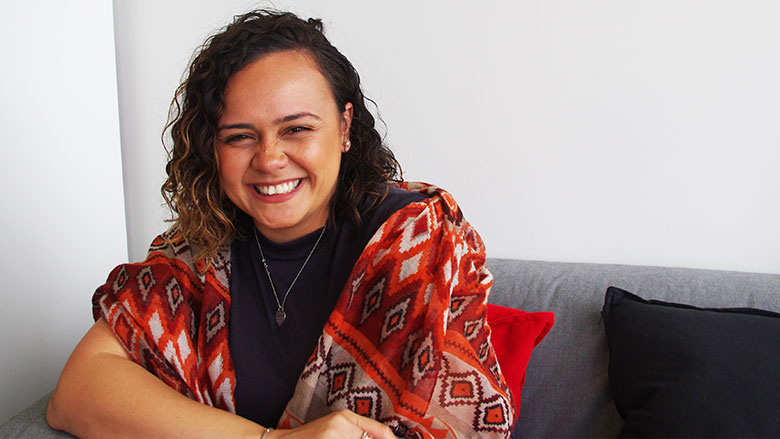Arieta Talanoa is an Australian-born Fijian and Tongan. While Arieta was born in Australia, she has spent most of her life living between here and the Pacific. After finishing school in Tonga, Arieta moved back to Sydney and found her calling. A need to provide a space for Pacific people to share their stories, led her to found a digital platform for Pacific storytelling called Talanoa.
What are you working hard to achieve?
To offer all Pacific people an opportunity to tell their story, in their own way and with their own voice. I believe that storytelling is key to challenging stereotypes, and to showcase the Pacific’s diversity. The most important thing in my mind is giving people a chance to feel empowered, to educate one another and to do so in a new, digital space.
What is your greatest achievement so far and why?
I’m proud that I listened to a voice within me that led me to found Talanoa – a platform for Pacific people – a place where their stories would be honored and heard.
On one hand, I knew that sharing Pacific stories would have a positive impact our community, as storytelling is so authentic to the Pacific way of knowing, learning, being, and doing.
In saying that, I’ve been taken aback by the amount of people who’ve approached me to say, “this story really impacted me” or “that article on Talanoa challenged my perspective”. It’s amazing hearing and watching the discussions and debates unfold. It really makes me feel like my work is making a meaningful difference.
What is your favorite saying?
"E na sega ni mate nai taukei ni sega na kena, e na mate ga ni sega na wekana." (“The indigenous Fijian will not die when he does not have anything, he will die when he does not have family.”) - Ratu Sir Lala Sukuna.
What are the biggest issues in the Pacific Islands right now? How can we fix them?
Right now I live in Australia, and in the context of my work with Pacific communities, I believe that one of the biggest issues is creating equal opportunities for Pacific people to learn from one another outside of religious, sporting and performing arts settings.
These settings are amazing, however, I’d love to see or work with communities to establish other pathways for Pacific people to learn, achieve, succeed and share their stories. I’d also love for Pacific people here in Australia to develop grass roots programs to learn more about indigenous Australians, their history and their culture too.
What does the future look like for your country? What’s possible?
I believe the Pacific has a bright future ahead – anything is possible. The caliber of young people who are (and will) step into leadership roles across the Pacific is incredible. We’ve learnt so much from leaders who’ve walked before us – what we’d do differently and what we might uphold for the betterment of our communities.
I see a Pacific that’s united, empowered, heard and respected across the globe. It’ll take an incredible amount of work, but like many of my peers, I’m willing to do what’s necessary to make an even better Pacific region, a reality.
Where do you see the Pacific, as a region, in 25 years?
Above water. The world must recognize and create change now – otherwise many of our island homes may not be around in 25 years’ time.
Despite this, I see the Pacific surviving, thriving and leading the way in terms of advocacy, innovation, and sustainability – particularly when it comes to indigenous and environmental issues. The Pacific will be at the forefront of meaningful change when it comes to creating better communities – and a better planet – for people across the globe.
Hear from other young Pacific Island leaders and download the Pacific Possible reports learn more about the potential for the Pacific Islands region over the coming decades.
The views expressed in this article do not necessarily represent the views of the World Bank Group and its employees.
